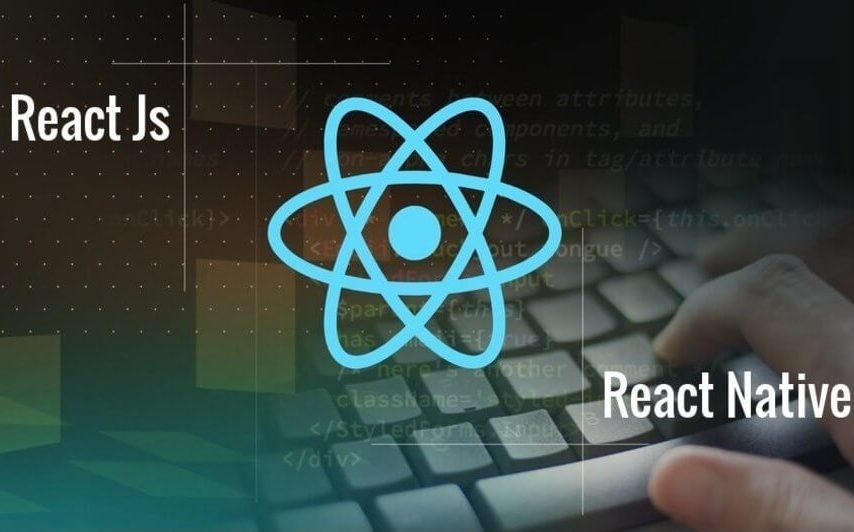Software developers work with a variety of mobile development tools depending on project requirements such as custom features, time constraints, and more. With those necessities in mind, it is critical to have a reliable, functional component library and framework that you can depend on to create professional, mobile applications.
React.js and React Native simplify the developer’s interface creation process, but there is a critical difference between them: one is a library, and the other is a framework.
Changing components such as buttons, dropdown lists, and interactive charts provide users with a dynamic experience. Those features enhance the user’s overall experience, which is why developers take the time to invest in the interfaces of a website or mobile application.
Whether you’re an experienced developer or just beginning to learn about website and mobile app development, this post will help you understand the framework and the library. Then, you can understand the circumstances in which you would use one, the other, or both.
React.js and React Native Differences
What is React.js?
React.js is a JavaScript library. Libraries are collections of “files, programs, routines, scripts, or functions that can be referenced in the programming code.”
React.js – otherwise known as React – was released by Facebook in 2013 and was created so developers could build user interfaces for single page website applications.
The frontend UI uses JavaScript libraries and JSX to streamline developers’ work processes by providing the heavy coding for a variety of commonly used components; programmers can choose to leave components as is or modify them when needed.
Both single-page applications and mobile apps can be developed using React.js. Users can develop those applications by creating reusable UI components, placing them in a desired position, and inputting information applicable to the project.
What is React Native?
React.js’ counterpart, React Native, is a JavaScript framework. Frameworks determine the structure of the project. This open-source development framework was released by Facebook in 2015 and is specifically used to make mobile apps.
Furthermore, the JavaScript framework supports cross-platform development, so developers can use it to make applications for both iOS and Android devices. Cross-platform capabilities are appealing to many developers because it cuts down the amount of time developers need to work because the code can be reused.
Library vs. Framework
Frameworks determine the way users code their project, making it essential for people to figure out how the framework components are accessed and functioned before productively using it.
Libraries provide users control that frameworks don’t, as they come with code that can be used as is or be modified.
The most significant difference between the two is the Inversion of Control. Geeks for Geeks explains the concept well by clarifying, “when we call a method from a library, we are in control. However, in a framework, the control is inverted, i.e., the framework calls us.”
So, frameworks are used for the structure of the project, whereas libraries are typically imported on an as needed basis to fulfill a task, such as creating a checkout process on your website.
React.js and React Native Similarities
While there are stark differences between the two, React.js and React Native have a lot in common! Here are a few key similarities to take note of.
Creation
• Users can create a software solution from scratch or by using existing projects. The framework and library don’t rule out the modification of preexisting applications that might have some beneficial aspects already.
Modification
• Since both the JavaScript library and JavaScript framework are open-source, programmers can modify the code to meet the needs of the clients or themselves.
Language
• React.js and React Native are based in the same language, JavaScript. Users interested in using both the component library and the framework are in luck because they don’t have to bounce between two or more languages to develop a mobile application,
Development Time
• Development time likely shortens when programmers choose to use React.js and/or React Native. While not as simple as drag and drop, the component library and framework both feature timesaving elements.
Documentation
• Both React.js and React Native are strengthened by thorough documentation. Documentation assists developers in their understanding of the component library or framework. Both documents introduce users to the elements that can be used by sharing what they can do and how to implement them using JavaScript.
Growth
• Both of the communities are growing! A prospering community is excellent for the expansion of knowledge and discovery because those things can lead to updates that change development processes for the better.
• As previously mentioned, Facebook released the JavaScript library and framework, and the community continually updates the documentation.
Choosing React.js or React Native
If you’re a web developer, you’ve probably tried out a variety of tools to create interfaces for yourself, your company, or your clients. Regardless of your audience, you should consider using a comprehensive JavaScript library or framework to build professional user interfaces; React.js and React Native offer you just that.
React.js is used solely for web development; people use React Native to create applications for the web, Android, and iOS. So, you should choose one or the other based on what your project is for.
Furthermore, it is highly encouraged to understand React.js before learning React Native. Skills a developer learns from React.js can be beneficial for using React Native, but it doesn’t apply vice versa. It’s arguably simpler for someone to learn React.js first because it will help users understand the more complex aspects of React Native, such as customizing modules.
The similarities and differences of the open-source software component library and framework can inspire developers differently. So, the choice is yours! You now know the benefits and drawbacks of both React.js and React Native, so use that knowledge and share it with other developers and coworkers. For more visit at www.codeauthority.com







